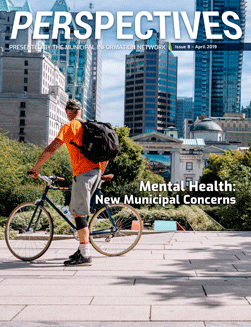This article was originally published by GOVERNING on governing.com and has been reprinted with permission.
One of the foundational dilemmas of developing and managing an urban bus network is the tradeoff between service coverage and frequency. Holding the number of buses constant, prioritizing geographic coverage means those buses can make fewer trips. However, neighborhoods don’t like to see their stops removed, so cities are often stuck with infrequent service and underutilized capacity.
Do transit officials consolidate their services to reach the largest number with the fastest possible rides, or do they maintain service delivery across as large an area as possible, even if that means uncertain wait periods for riders?
We recently spoke to Mike Terry, president and CEO of the Indianapolis Public Transportation Corp. (known familiarly as IndyGo), about this question. He outlined both the major overhauls and the small tweaks that he believes will drastically improve commutes for the city’s residents.
In Indianapolis, as is the case for so many other cities, the connections between jobs, housing and other amenities have all changed drastically over the years as neighborhoods and transportation options have evolved. “A developer might build a million-square-foot employment center with a good deal on rent, but oftentimes it will be located in a place that’s inaccessible by transit,” said Terry. “That puts a lot of pressure on the system.”
As part of his agency’s five-year plan, Terry and his colleagues at IndyGo envision a grid-based system that connects a series of frequent service lines. Working with transportation consultant Jarrett Walker, they sought to realign the system to prioritize dense, walkable areas, which is good news for economically disadvantaged communities.
The planning process turned out to be educational for community members. At one point Terry, Walker and others sat a group of them around a map with pipe cleaners that represented potential transit lines. Different colors stood for different levels of service. Financial constraints meant, of course, that not every line could be high-frequency. “People realized that they didn’t have enough money to do everything they wanted,” said Terry.
Ultimately, IndyGo decided to build a strong core system and utilize new transportation modes (rideshares and bikeshares, mainly) to serve residents beyond a comfortable walking distance from transit. It’s a compromise, but one that has become much easier to make as residents become more accustomed to using new shared transportation services and local governments work more closely with those services’ providers.
The spine of the improved Indianapolis transit system will consist of three bus rapid transit routes. Passengers traveling along these corridors will enjoy dedicated lanes as well as traffic-signal priority, meaning that buses should experience a “green wave” along their routes as they skim past intersections. If all goes according to plan, riders will no longer be caught in the lamentable position of catching a bus as soon as they step up to the curb, only to find themselves waiting for a half-hour at their next transfer point.
Consolidating the city’s transit corridors also has given IndyGo room to expand the hours of service that the new bus lines will run. Shift workers commuting in the middle of the night won’t be as reliant on car ownership, carpooling or the help of a loved one to drop them off and pick them up.
Small design changes, such as locating bike racks inside of buses, will allow multimodal commuters to quickly and comfortably get where they are going. Level boarding at station platforms will further reduce time intensive loading periods.
There is another area for efficiency gains in the boarding process. The rapid transit line will offer riders the ability to pay their fares prior to boarding so that they can get past the loading door and into seats as quickly as possible. Terry also noted that IndyGo wants to develop an account-based system “where a person has a card that can be loaded by an individual at a kiosk, or even by an outside funder such as a college or an employer.” Such a system could also enable government benefits to more easily be applied to bus trips, opening up the possibility for increased subsidies to economically disadvantaged commuters.
Changing land uses and transportation options should be seen as an opportunity for cities, not a threat. Perhaps the most prescient component of Indianapolis’s new system is its flexibility. A strong transit spine going through a dense downtown will be a necessary feature of urban transportation for a long time to come, but we’re seeing a number of new ways evolving for remoter residents to get to those spines. More innovations are to come, and more changes are on their way for how residents get around their cities.








